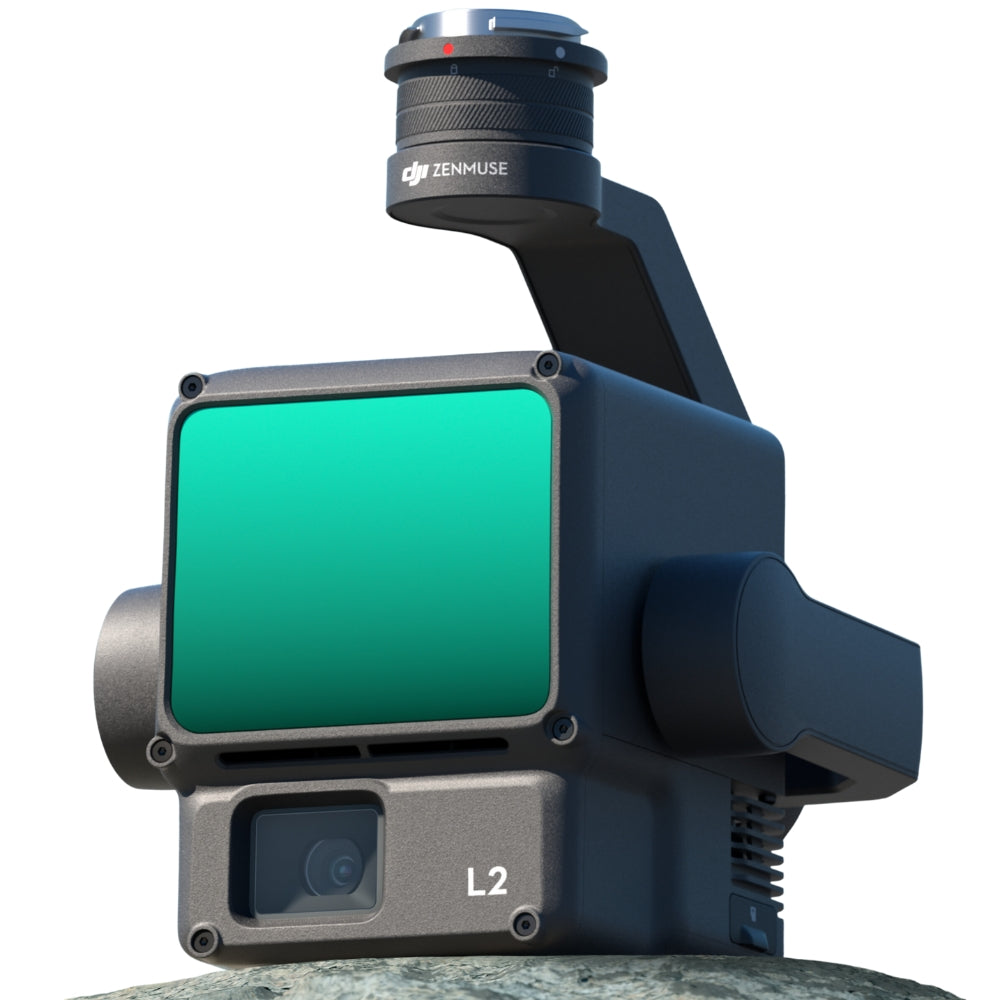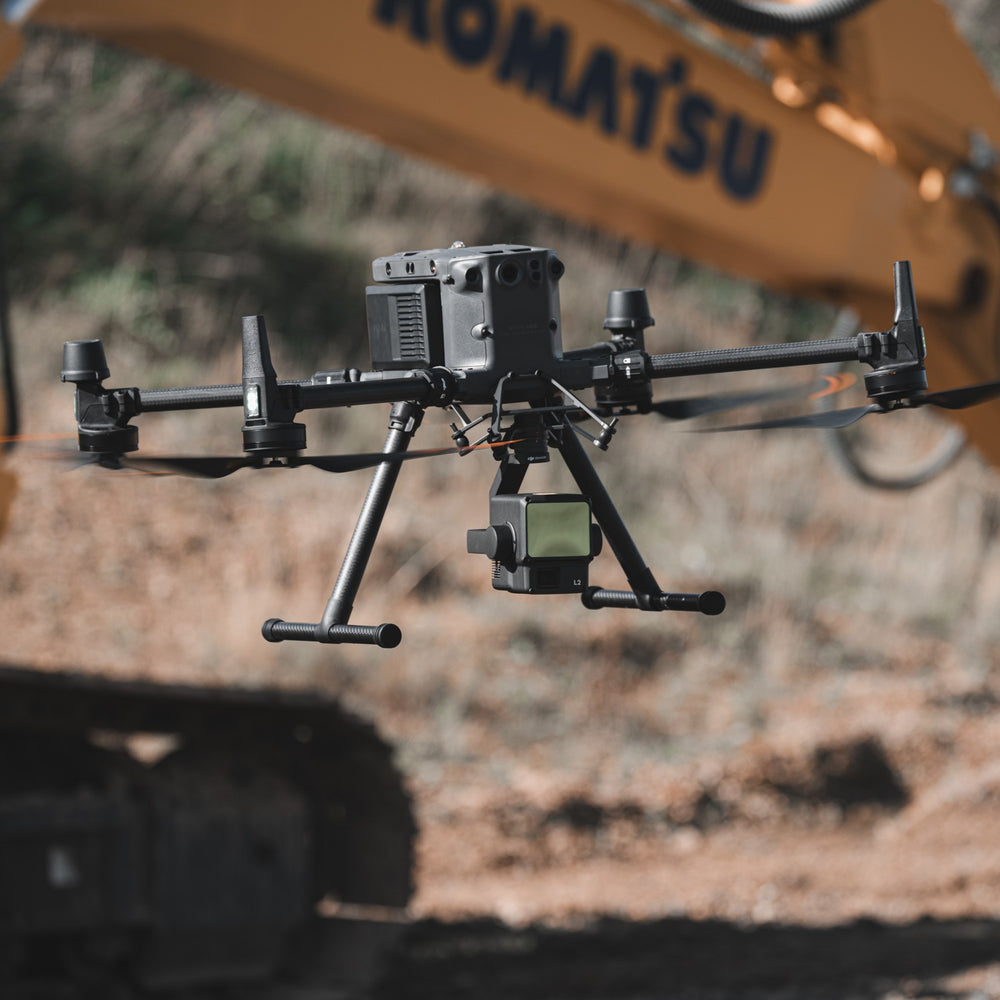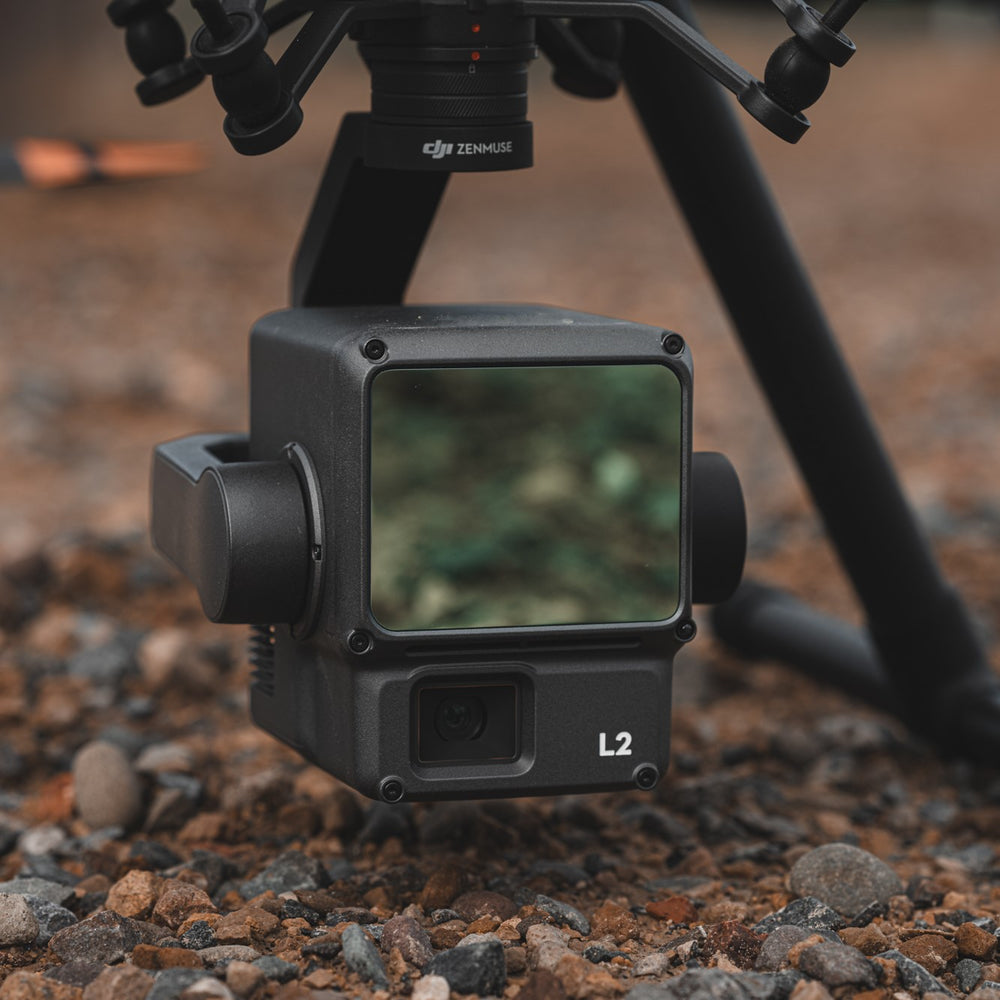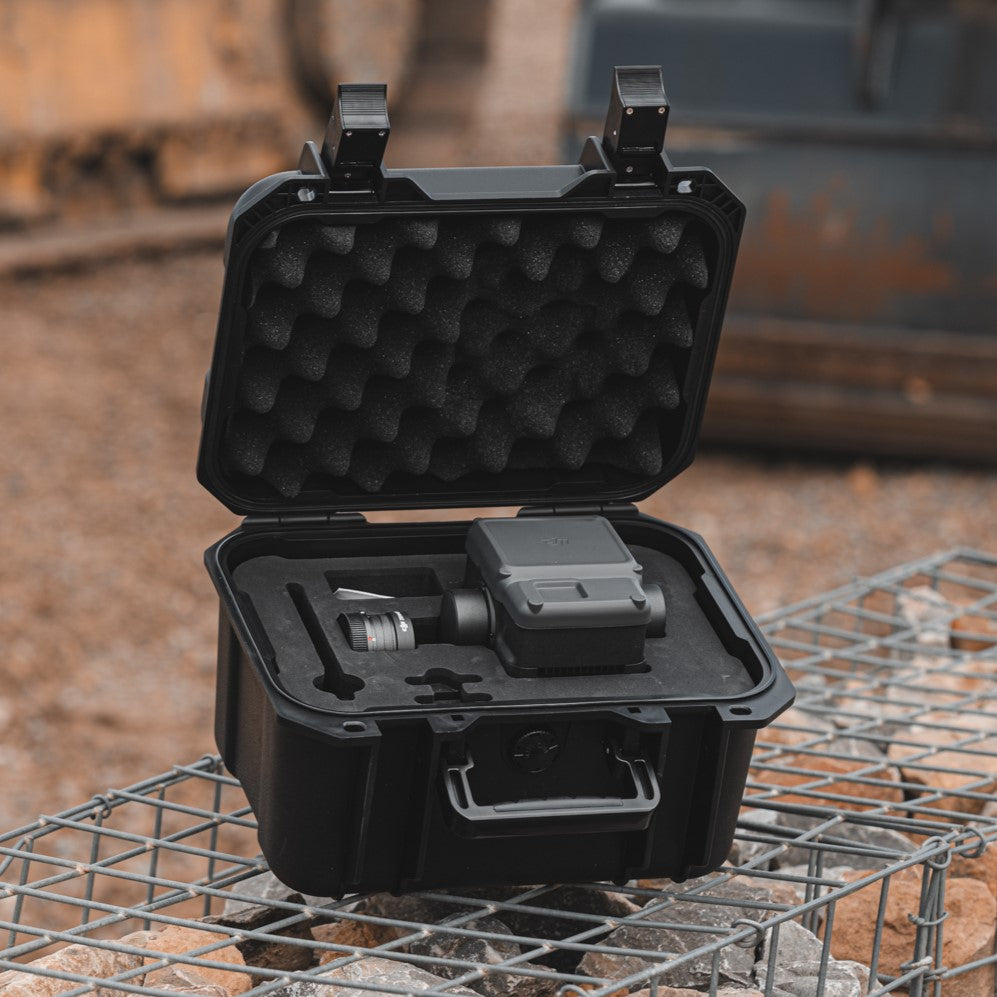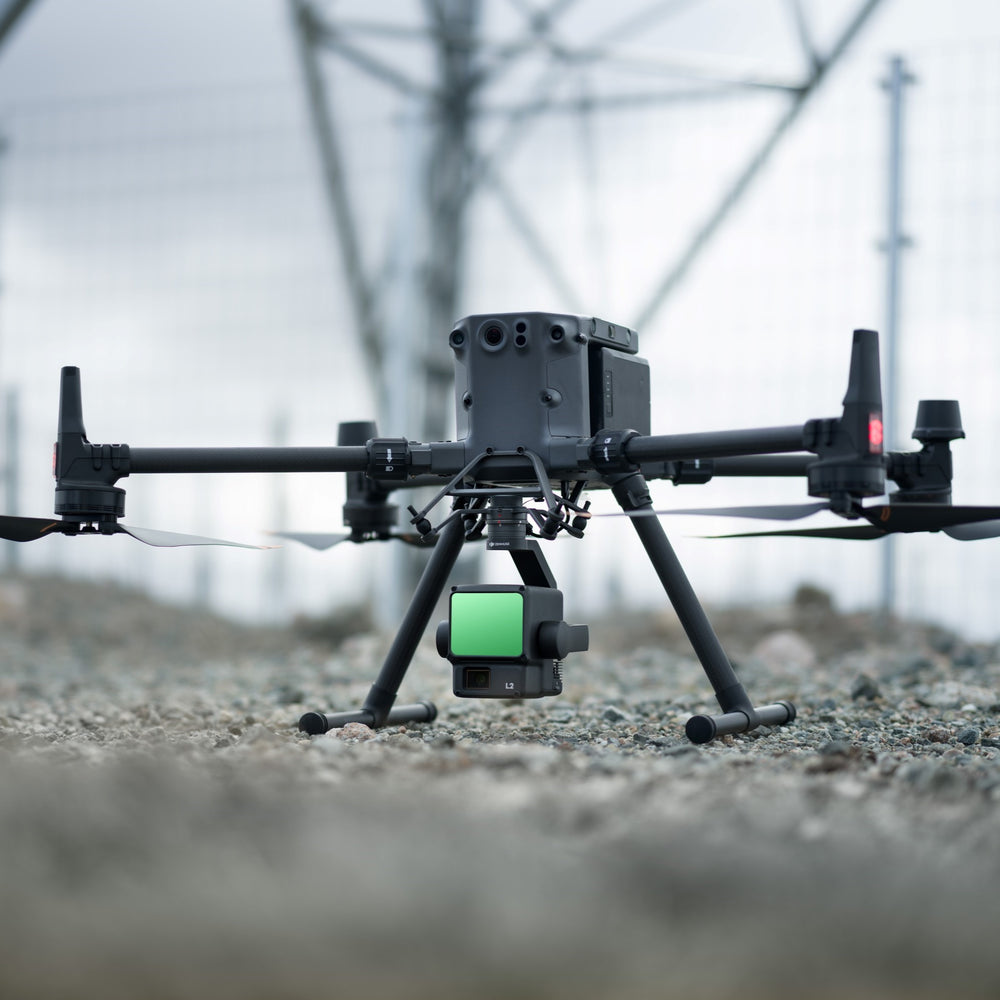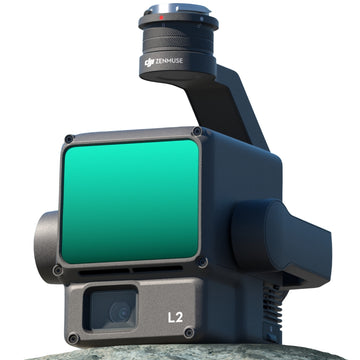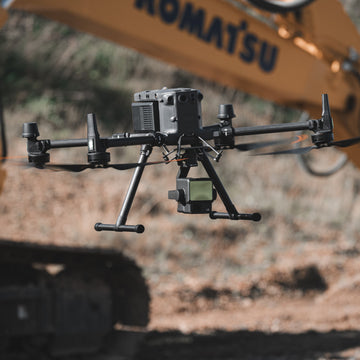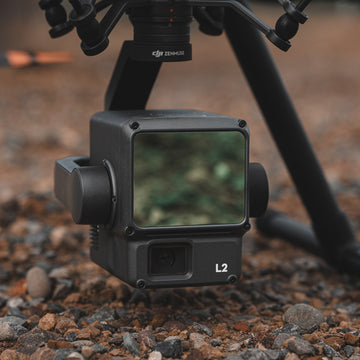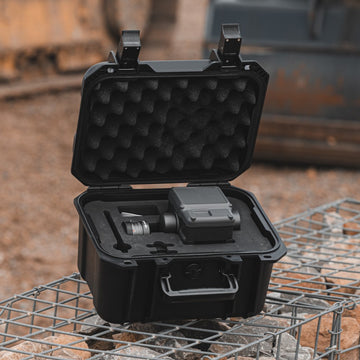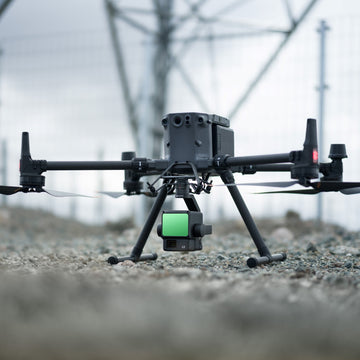DJI Zenmuse L2
DJI Zenmuse L2
Accurate LiDAR and photogrammetry payload
The DJI Zenmuse L2 is a highly-accurate and efficient drone surveying payload.
It integrates a LiDAR module, a high-accuracy IMU, RGB camera, and a 3-axis stabilised gimbal system.
The L2 supports up to 5 returns and has a maximum multiple return rate of 1,200,000 pts/s - capturing the details of complex structures and delivering centimetre-accurate reconstructions.
The 4/3 CMOS 20MP RGB mapping camera can be used for photogrammetry and for creating true colour point clouds.
Integrate the L2 with the DJI M350 RTK or the DJI M300 RTK (with the DJI RC Plus controller).
The L2’s IP54 rating allows it to be operated in wet or foggy environments. Also collect data at night.
Benefit from an enhanced workflow, with features such as Point Cloud LiveView and Quality Report.
Deploy the L2 across a range of industry verticals, such as energy, AEC, forestry, and public safety.
The L2 is a substantial upgrade compared to its predecessor, the L1, with higher sampling rates compatible with higher returns, a larger RGB sensor, and increased surveying efficiency.
L2 Dataset Examples
Exclusive datasets captured by heliguy™.
LiDAR Module
The L2 offers up to five returns, with a maximum return rate of 1,200,000 points per second, and has a laser pulse emission efficiency of 240kHz.
It enables the L2 to easily generate accurate elevation data in dense forest fields and extract it into DTMs, as well as detect small objects on a survey site and map complex structures.
- Detection Range: 450m @ 50% reflectivity, 0klx; 250m @ 10% reflectivity, 100klx.
- Point Cloud Rate: Single Return Max - 240,000 pts/s. Multiple returns, max 1,200,000 pts/s.
- Scanning Modes: L2 has non-repetitive scanning pattern and repetitive scanning pattern. This increases the likelihood of objects and other details being detected within the FOV.
- 5 Returns: Up to 5 returns @ 240kHz.
- More Concentrated Energy: Smaller beam size - laser spot size is 4 x 12cm @ 100m, 1/5th of the L1.
- Highly Accurate: Horizontal 5cm @ 150m flight altitude; Vertical: 4cm @ 150m flight altitude.
- Efficient: Collect data while flying at up to 15m/s. Cover up to 2.5km-squared in a single flight.
- LiDAR Module - Ranging Accuracy: 2cm @ 150m, compared to 3cm @ 100m on the L1.
- Laser Ranging: Supported, up to 450m.
RGB Camera
The RGB camera can be used for photogrammetry.
It also allows the L2 to output reality models and true colour point clouds, including real-time point cloud colouring (with parameters of Reflectivity, Height, Distance, RGB).
Use the RGB camera to capture video, as well as still imagery.
Key features of the RGB camera include:
- 4/3 CMOS sensor
- 20MP
- 84° FOV
- Mechanical shutter (to eliminate rolling shutter blur), high-speed burst with 0.7s interval
- 4K @ 30fps video
High-accuracy IMU
The L2's high-accuracy IMU (inertial measurement unit) is essential for quality LiDAR data collection.
- Yaw Accuracy: Real-time 0.2°, post-processing, 0.05°.
- Pitch/Roll Accuracy: Real-time 0.05°, post-processing, 0.025°.
- Horizontal Positioning Accuracy: RTK FIX: 1cm + 1ppm.
- Vertical Positioning Accuracy: RTK Fix 1.5cm + 1 ppm.
As a bonus, the IMU on the L2 does not require a warm-up, and is ready to operate after start-up.
One-stop Processing
Process L2 data through DJI Terra.
The L2 includes a DJI Terra licence for point cloud data processing, including pre-processing and post-processing point cloud functions.
DJI Terra supports exporting point cloud models in the following formats:
- PNTS
- LAS
- PLY
- PCD
- S3MB
DJI Terra updates - such as added support for generating a DEM for LiDAR point cloud reconstruction, ground classification for LiDAR data; and automatic GCP marking - provide a more seamless and comprehensive workflow.
After processing through DJI Terra, the data can be imported into third-party software, such as DJI Terrasolid, for further manipulation and analysis.
L2 vs L1
L2 provides significant upgrades for surveying
The L2 is an upgraded version of the L1. Key upgrades include:
- More Efficient Payload: Does not require 5-10 minute period for IMU warm up, which is needed when using the L1.
- Accuracy At Speed: Accurately capture data at 15 m/s flight speed. Recommended flight speed for L1 is aroud 8 to 13 m/s.
- Improved Return Pulse: L2’s maximum return pulse is Penta, as opposed to L1’s Triple return, resulting in improved ability to scan through areas of vegetation and capture complex structures.
- Higher Sampling Rates: Higher sampling rates compatible with higher returns: L2’s pulse rate is 240 kHz with 5 returns, L1 achieves 160kHz with Triple-echo mode.
- Increased Accuracy: Greater absolute accuracy compared to the L1 sensor.
- Denser Point Clouds: The ground point density of the L2 is more than 3 times that of the L1.
- Upgraded RGB Sensor: L2 has a 4/3 CMOS sensor and 0.7s shooting interval, compared to L1’s 1-inch sensor and 2 second (minimum) shooting interval.
For a full comparison between the two payloads, including side-by-side datasets, read our in-depth L2 vs L1 blog by clicking the button below.
